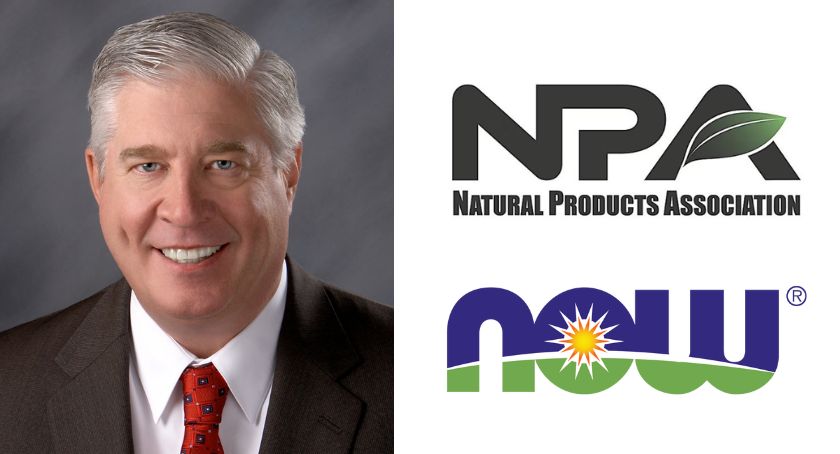Features
Omega 3s: Industry All-Stars
Scientific strides have given the omega 3 market strong legs, but some significant hurdles still stand in the way.

By: Sean Moloughney

Supported by a wealth of clinical research that has validated a broad compilation of health benefits, omega 3 fatty acids have developed, arguably, into the most respected class of ingredients in the nutraceuticals industry today. However, as the market continues to mature, the shape of the future landscape hinges on several critical question marks.
Worldwide, consumers are spending more than $13 billion on omega 3 products, including pharmaceuticals, dietary supplements, functional foods and infant formulas. In the U.S. alone, dietary supplement sales reached a milestone $1 billion in 2009, according to Nutrition Business Journal (NBJ), Boulder, CO, and data suggests 2010 will be another record year. Meanwhile, the European market earned revenues of $323 million in 2008 and could reach $526 million in 2013, according to Frost & Sullivan.
Nearly 90,000 tons of EPA and DHA oils were consumed globally in 2009, according to the Global Organization for EPA and DHA Omega 3s (GOED). In some ways, sales departments can thank teams of researchers for their commissions over the past few years, as omega 3 polyunsaturated fatty acids (PUFAs) EPA and DHA have clearly profited from a flood of scientific evidence supporting their credibility as vital, functional nutrients. GOED confirms there is a strong, positive correlation between the publication of omega 3 clinical studies and supplement sales in the U.S. Science continues to drive the market forward and the pace of research has increased, according to the association.
However, omega 3 deficiency continues to pose significant health risks. A study from researchers at the Harvard School of Public Health, published in April 2009, found omega 3 deficient diets cause several thousand preventable deaths annually in the U.S. More specifically, of the 12 dietary, lifestyle and metabolic risk factors examined in the study, omega 3 fatty acid deficiency ranked as the sixth highest killer of Americans, responsible for 72,000 to 96,000 preventable deaths yearly. Omega 3 fatty acid deficiency even beat out high trans fat intake, which is responsible for an estimated 63,000 to 97,000 deaths annually.
Heart of the Matter
Since 1979 there have been approximately 20,000 scientific papers published about omega 3 fatty acids, including about 2200 randomized clinical trials, according to Baldur Hjaltason, business development and sales manager, EPAX AS, Aalesund, Norway. “It is no question that solid science has driven the industry to the level it is today,” he said. “Most consumers take omega 3 supplements because they are worried about heart diseases or high cholesterol. There are a large number of scientific papers that have dealt with those items, but the most interesting area of omega 3 fatty acids today is how they beneficially affect gene expression in the body. This is a relatively new field and indicates that large changes in gene expression are likely an important mechanism by which these omega 3 fatty acids exert their potent clinical effects.”
Steve Mellor, technical and product applications manager, Croda Heath Care, Edison, NJ, agreed that many consumers have come to associate omega 3s with a healthy heart. “The universal acceptance of the heart health benefits of omega 3 can be ascribed to the enormous scientific evidence that has translated into rising consumer awareness, adoption and integration into their diets.”
According to the Natural Marketing Institute, Harleysville, PA, 71% of current omega 3 users associate omega 3 with cardiovascular benefits. Additionally, 90% are “concerned” about heart health while 58% say they are currently “managing” their heart health.
Still, the general population could be more informed, with two out of every five consumers (40%) lacking any understanding of omega 3 benefits, and 85% saying they don’t know anything about the benefits derived from DHA specifically. Even among current omega 3 users there seems to be untapped potential, with 83% indicating they would like to get more omega 3s.
Overall, omega 3s have clearly benefited from a qualified heart health claim in the U.S. However, according to Adam Ismail, executive director of GOED, the entire qualified health claim system is under threat, with multiple lawsuits pending. Confronting such threats, GOED hopes to petition for a fully-approved omega 3 heart health claim within the next year. “We think the science is there to do that,” Mr. Ismail said.
Perhaps the next step in the maturing omega 3 market will be to overcome several other regulatory hurdles. In Europe, debate concerning triglyceride and blood pressure article 13 claims is currently focused on appropriate dosage levels, Mr. Ismail added. The European Food Safety Authority (EFSA) has issued an opinion that 2-4 grams of EPA and DHA per day is necessary to achieve any effect. However, “(GOED) submitted a pretty extensive dossier that had four or five as many studies as the other dossiers on triglycerides. And a lot of our studies showed that dosages as low as 200 mg per day offer a triglyceride maintenance benefit in healthy people.”
EFSA’s opinion does not cite any of the studies GOED submitted, Mr. Ismail continued. “We’ve also funded a meta-analysis that clearly demonstrates you can get benefits at lower dosages. The struggle for us right now is we’re trying to get that evidence considered.”
Back in the U.S., GOED has urged FDA to fund an Institute of Medicine (IOM) review of the Dietary Reference Intakes (DRIs) for EPA and DHA. The U.S. and Canada are the only two developed countries in the world without recommendations for daily omega 3 intakes, Mr. Ismail noted. Most recommendations from other countries range from 250-500 mg per day. Mr. Ismail is optimistic that a review will eventually take place. With limited resources, IOM can only conduct one review at a time, but the institute is expected to complete its current, two-year-long assessment of calcium and vitamin D this fall.
Sam Wright, president and CEO, The Wright Group, Crowley, LA, said an RDI for omega 3s “is really a public health necessity in an era of rising healthcare costs and an aging population.”
In other regulatory matters, the Dietary Guidelines Advisory Committee released 2010 draft guidelines in June that call for an increase in EPA and DHA consumption. The committee recommends consumers eat two servings of seafood per week to obtain about 250 mg of EPA and DHA per day. “In 2005 they also recommended two servings of fish per week, but then said that was 500 mg of EPA and DHA,” Mr. Ismail noted. “So we would like to see some consistency there.”
He also hopes the committee will consider and recommend other sources of omega 3s, outside of seafood. “Dietitians and nutritionists will say the best source of any nutrient is a whole food. The issue is: what happens when a consumer isn’t getting the right amount? There is very clear science indicating benefits for getting your long chain omega 3s from a capsule.”
Above & Beyond
The health benefits associated with omega 3 fatty acids stretch far beyond the cardiovascular system, truly running the gamut, from brain health and infant development to breast health, eye health, joint health, skin health, immune function, depression and others.
“The wide variety of health benefits impresses me most, as opposed to any one clinical,” said Sharrann Simmons, North American marketing director, Cognis Nutrition & Health, La Grange, IL. “But also, in this body of science, there really are no negative side effects. When you look at prescription drugs for some of these same issues, like statins for heart health, there are some pretty major side effects. Compared to a lot of other things we consume, fish oil is one of the safest things in the world.”
Among a cadre of recent studies, research published in the Journal of Clinical Psychiatry suggests potential benefits of omega 3 supplementation among those suffering from major depressive episodes (MDE). This inclusive, double-blind, randomized, controlled, 8-week, parallel-group trial was conducted October 17, 2005 through January 30, 2009 in eight Canadian academic and psychiatric clinics. Adult outpatients (n=432) with MDE lasting at least 4 weeks, including 40% taking antidepressants at baseline, were randomly assigned to 8 weeks of 1050 mg/day of EPA and 150 mg/day of DHA or placebo. The primary outcome was the self-report Inventory of Depressive Symptomatology (IDS-SR30); the secondary outcome was the clinician-rated Montgomery-Åsberg Depression Rating Scale (MADRS).
Researchers concluded there was only a trend toward superiority of omega 3 supplementation over placebo in reducing depressive symptoms. However, there was a clear benefit of omega 3 supplementation among patients with MDE without comorbid anxiety disorders.
Another study published in Cancer Epidemiology, Biomarkers & Prevention indicated that fish oil might be inversely associated with breast cancer risk. Participants in this study were female members of the VITamins And Lifestyle (VITAL) Cohort. Postmenopausal women, ages 50 to 76 years, who were residents of western Washington State, completed a 24-page baseline questionnaire in 2000 to 2002 (n=35,016). Participants were queried on their recency (current versus past), frequency (days/week) and duration (years) of specialty supplement use. Incident invasive breast cancers (n=880) from 2000 to 2007 were obtained from the Surveillance, Epidemiology and End Results registry.
Current use of fish oil was associated with reduced risk of breast cancer. Ten-year average use was suggestive of reduced risk. These results held for ductal but not lobular cancers. Researchers concluded that fish oil should be a potential candidate for chemoprevention studies. However, until that time, they said it is not recommended for individual use for breast cancer prevention.
Still another significant breakthrough in omega 3 science involved algal DHA and its impact on cognitive function. The Memory Improvement with Docosahexaenoic Acid Study (MIDAS), published in Alzheimer’s & Dementia: The Journal of the Alzheimer’s Association, reported that healthy adults 55 years of age and older taking 900 mg algal DHA for 6 months demonstrated enhanced memory and learning skills compared to those taking placebo.
This double-blind, randomized, placebo-controlled, multicenter trial evaluated the effects of supplementation on 485 healthy adults. Researchers concluded that supplementation with 900 mg/day of algal DHA (life’sDHA from Martek Biosciences Corporation, Columbia, MD) for 6 months resulted in a significant two-fold reduction in the number of visuospatial learning and episodic memory errors and significant increases to verbal recognition memory scores. The study also showed that DHA supplementation doubled plasma DHA levels. Higher plasma and red blood cell levels of DHA are associated with better cognitive function. Additionally, DHA supplementation significantly decreased heart rate compared to placebo over the 24-week supplementation period, providing a cardiovascular benefit consistent with previously published studies in humans.
As many as 5.4 million older Americans have cognitive impairment without dementia; of these, approximately 12% will develop dementia annually. Considering the aging Baby Boomer demographic, maintaining cognitive function later in life will continue to be a hot topic.
Supplements vs. Foods
Dietary supplements have propelled the omega 3 market into the mainstream discussion about nutrition and health. According to The Wright Group’s Mr. Wright, the supplement industry represents at least 80% of the omega 3 market by volume, and about 60% in dollar terms.
“The food and beverage industries use value-added product forms that are lower in potency and more expensive per unit of activity, making it somewhat difficult to deliver a high enough dose,” he said. “Organoleptic properties are very important since no matter how good an ingredient might be, if it tastes or smells bad, no one will buy a product containing it. There are also serious stability concerns and ingredient interactions in foods that must be addressed to guarantee label claims and expiration dating.”
Diane Hnat, senior technical marketing manager, Human Nutrition & Health, DSM Nutritional Products, Parsippany, NJ, agreed that the dose of EPA and DHA delivered per capsule far outweighs what can be done in a food or beverage. “The manufacturing for a fish oil capsule is an established process in the supplement industry. Some well-known supplement brands, for example, have nine different SKUs in their line, further differentiating size/shape of capsule, ratio of EPA to DHA, flavorings added to oil, etc. Use of fish and algal oils in functional foods and beverages require more specific and rigorous processing, packaging and handling techniques. Thus, not being as robust, a product fortified with fish or algal oil may have to have a slightly shorter shelf-life or more protective packaging.”
Omega 3 supplements, especially soft gels, continue to be the best vehicle for omega 3 fish oils, according to Mary Ann Siciliano, national sales manager, Arista Industries, Wilton, CT. “But the functional food/beverage category, especially for kids and people who do not like to take supplements, will continue to grow.”
Functional foods and beverages have benefited from improved technologies that resolve many formulation issues, said Ron Wheelwright, senior account manager, Norway-based Denomega Nutritional Oils. “Improved antioxidant technologies have allowed omega 3 forms to have a longer shelf-life. Also, improved microencapsulation methods have allowed omega 3s to be used in applications where they could not be used before, such as soups, instant beverages and nutritional powders.”
Cognis’ Ms. Simmons said she expects to see more omega 3 fortified foods in the future thanks to microencapsulated omega 3 emulsions and powders. “There are more ways for manufactures to use omega 3s in a functional food system that protect the omega 3 from oxidation during storage and processing.”
She also predicted the enhanced water category would continue to grow, as younger consumers reach for water over soda. “The convenience is something Americans have fallen in love with. Once you put other nutrients in the water then it makes it even better. That is a category that has a lot of growth potential. Whether it’s omega 3s or other nutrients, that’s where some of the emulsion technologies currently available are going to help companies mix oils in water. That’s actually one of our core capabilities at Cognis. Many of our ingredients are lipids, or fats, and we have found unique ways to incorporate them into water-based systems.”
Dan Murray, vice president, Business Development, Xsto Solutions, Morristown, NJ, said certain products like orange juice and yogurts tend to be more formulation friendly, but agreed that advanced technology allows for the addition of oils to products like water-based beverages and confections, “where taste drives the success of the finished product.”
“Working to achieve the added goal of clarity and stability at an acceptable price point has yet to be conquered, but we are closing in on it,” he added. “From micro-emulsions and encapsulation to liposome and beadlet technology, the industry is working to solve the oxidation and odor issue. Whether one method will win out or several methods will be used remains to be seen, but progress is being made to improve delivery of omega 3s.”
Mr. Murray said he expects to see more specialty and condition-specific omega 3 products fill niche market areas in the future. He offered Brudy Technology, and its Algatrium product, as an example. “By purifying and naturally rearranging the DHA (to the second position), Brudy has developed a product that closely resembles DHA found in human breast milk. The Brudy technology has improved the bioavailability of DHA from normal fish oil and created a unique product offering.”
Capitalizing on the popularity of another important nutrient, Hormel Foods Specialty Products Division, Austin, MN, has introduced its ETERNA OmegaSource omega 3 EPA/DHA and vitamin D combination ingredient for food and beverage applications. The combination ingredient is allergen free, GMO free, Generally Recognized As Safe (GRAS) and kosher. It contains efficacious doses of omega 3 EPA/DHA and vitamin D, although Hormel Foods has the capability to customize its ingredients based on customer needs. The company’s proprietary technologies stabilize and protect the ingredients, allowing for emulsion in water-based systems such as sports and energy drinks, smoothies and fruit juices.
“Demand for vitamin D fortification is on the rise and omega 3 EPA/DHA is as popular as ever,” said Chet Rao, PhD, marketing manager, Functional & Nutritional Products, Hormel Foods Specialty Products. “This new ingredient will open doors for our customers, allowing them to create value-added products that stand apart from their competition.”
From the Source
As the omega 3 market has gained in prominence, more questions regarding sustainability have emerged. However, industry experts point to a lack of understanding about the source of fish oils. The major sources of EPA and DHA are sustainably managed and monitored by third parties, according to GOED’s Mr. Ismail and other experts.
For example, Mr. Hjaltason of EPAX said his company has built a system using batch numbers that offers its customers traceability to the fish meal plant where its oil was produced in Peru, as well as where and when the fish was caught. “The focus on sustainability will increase since many retailers have said they will only sell fish oil products that have documentation provided that the fish oil used in the product comes from sustainable fish species,” he added. “Also, it is important that a third party certification body will do the auditing according to international standards of fishing sustainability.”
Many questions continue to surround the market for krill, which are small, shrimp-like crustaceans. Eric Anderson, vice president of sales and marketing, Aker Biomarine, North America, addressed many of the issues his company has heard within the industry regarding sustainability. “We fish krill with our dedicated, eco-friendly vessel the Saga Sea with the greatest care, properly-licensed and under the scrutiny of independent, third-party observers. As a result, Aker BioMarine is the only krill provider certified by the Marine Stewardship Council (MSC), an independent, global, non-profit organization that works to promote the best choices in sustainable seafood. Also, the harvesting of krill is regulated by the Commission for the Conservation of Antarctic Marine Living Resources (CCAMLR).”
Each batch of raw materials used to manufacture Superba krill oil is registered, he continued. “All the components used to create Superba are traceable back to the supplier. Storage and transportation points are controlled, monitored and registered. Our records and documentation assure full traceability throughout the whole supply chain, from harvesting the krill in the Antarctic to the end product, Superba.”
Aker Biomarine also employs its Eco Harvesting technology. “This specially designed trawl system collects and pumps the krill to the surface vessel and includes a special mechanism that singles out unwanted by-catch, releasing it unharmed. Eco Harvesting causes minimal environmental impact and prevents the krill from enzymatic degradation. This is the key to preserving all the key nutrients in the end product.”
Alongside EPA and DHA, krill is also a good source of astaxanthin, a potent antioxidant carotenoid. The EPA and DHA in krill are also bound to phospholipid fatty acids, which are key structural components of human cells and play a vital role in membrane functioning.
Sustainability has also been a key focus for Christchurch-based Aroma New Zealand, according to Ben Winters, the company’s director. “The green lipped mussel market has a very sustainable future, as green lipped mussels are farmed and grown in the clean pristine waters of New Zealand, which are monitored for water quality on a frequent basis. Testing includes biotoxin levels, heavy metals and microbiological activity. If the harvesting areas exceed certain levels and if there is too much rainfall, then mussel farms are closed until deemed safe for harvesting to commence.”
Working with New Zealand lipid scientists, the company has stabilized its green lipped mussel extracts with botanical antioxidants, producing a bioactive synergy. Aroma New Zealand has also doubled the anti-inflammatory activity of it GlycOmega Green Lipped Mussel powder, according to Mr. Winters. “Aroma New Zealand’s products have been attracting interest from the cosmetic market lately, as omega 3s contain anti-inflammatory and moisturizing properties that promote healthy, radiant skin,” he added.
While marine sources of omega 3 continue to dominate the market, vegetarian sources offer an attractive alternative for certain consumers. “Chia seed, which contains ALA (alpha linolenic acid), is quite versatile for functional foods,” said Dean Mosca, president, Proprietary Nutritionals Inc. (PNI), Kearny, NJ. “Benexia is available for food manufacturers in the following forms: whole seed, milled seed, oil, milled sprouted seed and defatted chia bran. Chia is a whole grain and consumers are becoming much more aware of it as a healthy grain choice.”
After a positive opinion from EFSA in March 2009, the chia seed received novel food status in the EU, authorizing the commercialization of the chia seed and ground seed at a level of 5% in bread applications, Mr. Mosca added.
Marilyn Stieve, business development manager, Glanbia Nutritionals, Monroe WI, also discussed ALA, derived from flax. “The most important research in flaxseed for the past two to three years has focused on cardiovascular health and women’s health. Flaxseed, from which we source our ALA omega 3, is also extremely high in lignans, a compound similar to estrogen, which has antioxidant properties.” Flaxseed also offers high levels of fiber and protein.
A unique property of flaxseed is that it contains a gum matrix, she added. “Through a proprietary processing system, Glanbia Nutritionals has developed a patented method to functionalize these gum systems, and as a result we have created the OptiSol range of flax-based ingredient solutions. OptiSol 5000 can replace hydrocolloid systems in food applications.”
Proponents of EPA and DHA argue that ALA is less useful to the body since it must be converted into long chain fatty acids. Recognizing that some consumers still prefer vegetarian sources, DuPont, Wilmington, DE, has introduced an alternative to fish-based omega 3 oils using technology protected by more than 60 U.S. patents and patent applications. The first dietary supplement to utilize DuPont’s technology is marketed by Futurebiotics as New Harvest, which contains 600 mg of EPA in each 1200 mg soft gel.
As the still-maturing omega 3 market progresses, it will face regulatory issues and other outside pressures from competing interests. However, with a strong foundation in well-conducted research, and as consumers recognize their own dietary deficiencies, omega 3s should continue to reap many successes.




















